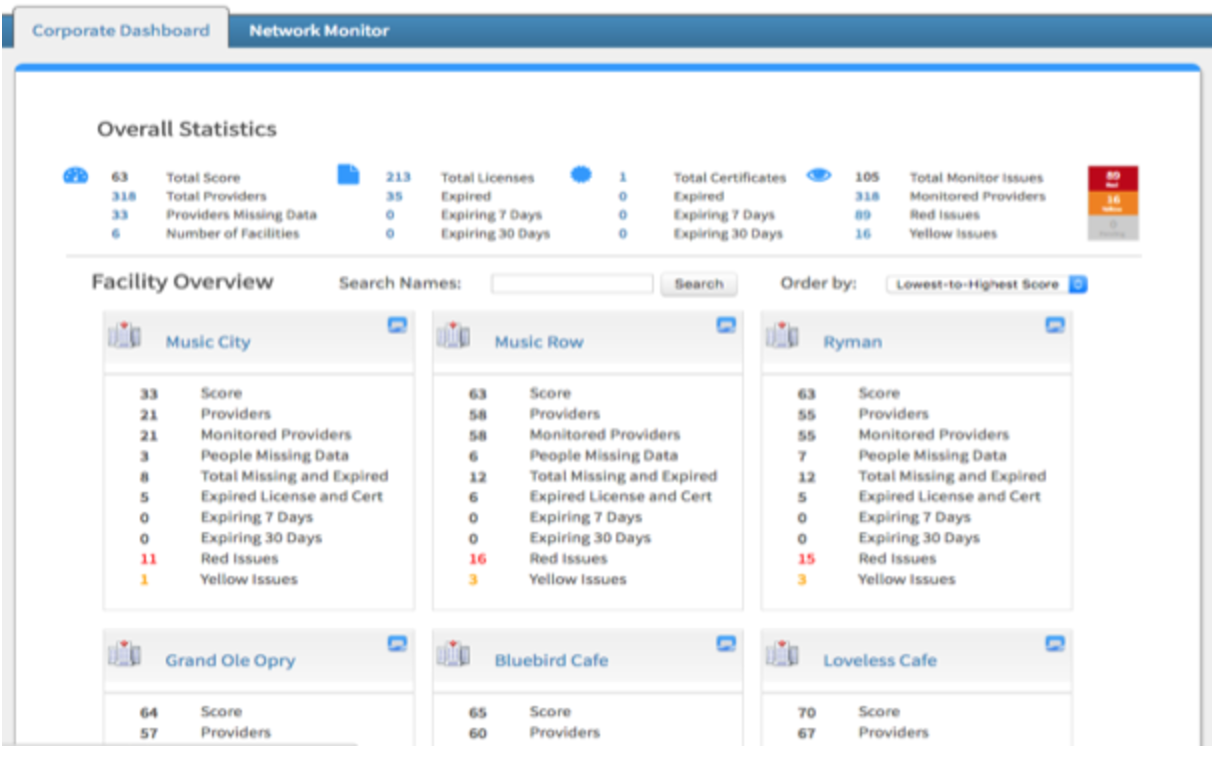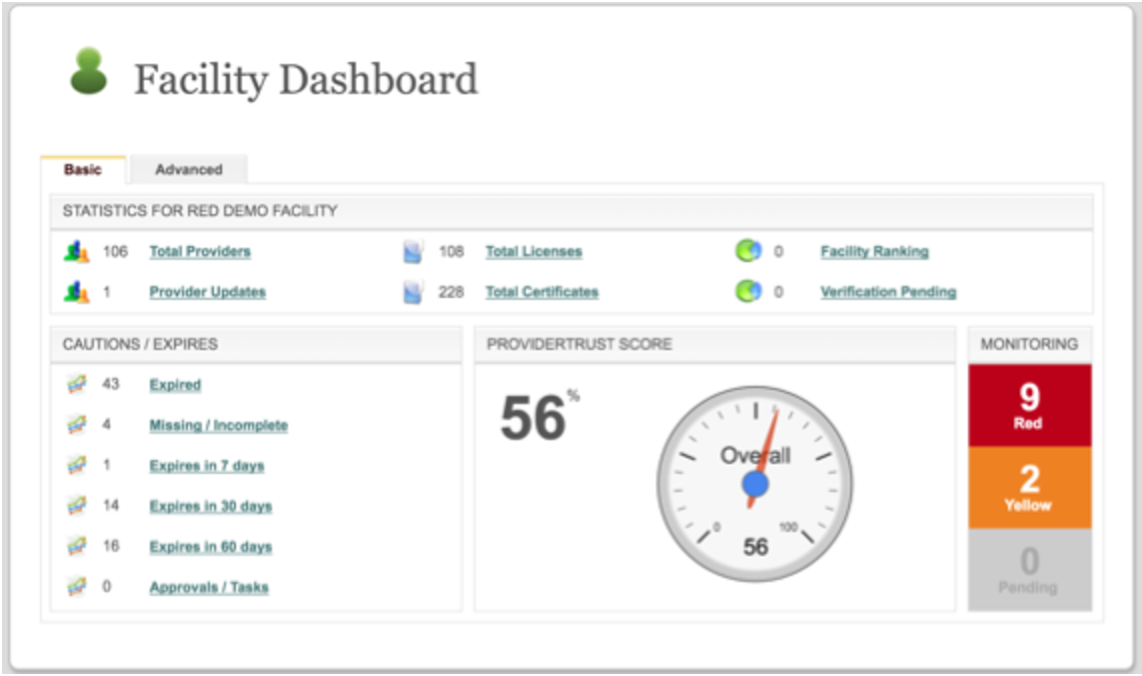Compliance moves fast these days, with all of us wanting information at our fingertips. As a former Chief Compliance Officer of a very large post-acute care company, I know how much data is available and how difficult it can be to turn that data into something useful or meaningful. One of the ways that I found helpful in organizing data was creating a variety of dashboards.
We know information is only as good as its relevancy and timeliness, it can’t solely be a bunch of metrics or data in a report. We want information to help guide us or focus our time and attention. In many ways, a compliance dashboard can help solve this dilemma. A dashboard helps bring various data elements together to help tell a story or identify areas where we may need to do a little extra “digging” to see if there is an issue or not. Some other reasons to consider using a dashboard include:
- Saves time analyzing disparate data
- Trending metrics and grouped together metrics tell a better story
- Individual metrics may be misleading
- Unlikely to review individual reports
- Transfers data into information
A compliance dashboard can do all of these things and even more depending upon what you track. Dashboards can also help identify risks or areas of weakness in your compliance program. Another important benefit is the ability to see company-wide trends, and most importantly, it can help you identify where to ask more questions.
There is a lot to consider when creating a compliance dashboard. Which metrics to pick, how frequently you gather the metrics or update the dashboard, how many metrics to place together, and for that matter – which metrics you should group together. For many compliance officers, you face the challenge of how many dashboards are too many. Should you have multiple or a one-stop shop?
Honestly, each situation and compliance program will be different, so go with what you feel will be the most comfortable and informative. If you operate multiple locations, you may need multiple dashboards that can differentiate at both facility and corporate levels. Some dashboards will accommodate this type of segmentation in one platform. Here are a few things to help keep in mind when choosing solution(s).
Initial Planning
As you begin to consider what metrics to monitor here are a few thoughts:
- Identify key risks in areas such as:
- Quality
- Litigation
- Government Trends
- Financial
- Compliance
- Consider each business line and their specific metrics
- Talk to key stakeholders in your organization and identify their risk drivers
- Don’t work in a vacuum
Organizing Your Data
Once you have gathered your metrics, think about what story you want to tell and how best to tell it. Consider how to organize your metrics to answer these questions. A friend and colleague, Sue Coppola, Sr. Vice President of Care at Sunrise Senior Living, shared her organizational method with me. Sue breaks things into three buckets; structure, process, and outcomes. She shared some examples of the types of metrics for each bucket including:
Structure
- Turnover/Retention
- Staffing/Labor
- Ethics Hotline Notification
Process
- Falls, Weight Loss, Pressure Ulcers
- Reporting of Allegations of Abuse/Neglect
- Compliance with Mandatory Meetings or Processes
Outcome
- Regulatory/State Survey
- Denial Trends
- Financials (EBITDA, NOI)
- Employee and Resident Satisfaction
Metrics to Consider
When you create your compliance dashboards consider metrics such as:
- Compliance events
- Calls
- Internal Investigations
- Third-Party Investigations or Inquiries
- Volume of hotline calls
- Types of hotline calls
- Number of anonymous vs. identified hotline calls
- Length of time to complete an investigation
As a Chief Compliance Officer I tracked all types of compliance events on one dashboard and compared them by quarter to determine trend(s). I also tracked by state and region within my organization to see if I had any unusual activities that may have indicated a possible leadership issue or regulatory change, etc.
I also used the corporate dashboard of our ProviderTrust application to help monitor exclusions, sanctions, and licenses. By having all of this information in one place it made it so much easier to help support the centers. Also, it helped reduce possible risks of any employees working with a sanctioned or expired license. At times, it was necessary to pull someone off the schedule if an issue occurred.
Here is a sample of a corporate ProviderTrust dashboard that quickly allowed me to see an overall picture of monitoring metrics in our organization.
Here is a sample of a facility dashboard which allows individual locations to quickly monitor their compliance as well. You will notice that both of these are good examples of multiple metrics in one dashboard, allowing you to see a bigger picture of monitoring compliance.
Evaluating Results
The final area for discussion is what to do with the information you glean from your dashboards. Once you have created your dashboards and are beginning to see trends or patterns, it is important to do something with that information. Will you be reporting insights to your Compliance Committee or Board of Directors? Or will you be using this information to enhance your audit plan? Having quantitative examples is imperative to a great discussion about how and where the compliance program should improve.
Sometimes dashboards don’t provide all the answers, they actually highlight the need for more information. The need for more information can be resolved in many fashions but at times the best thing to do is talk to people. Go on a site visit to talk with people to learn more about their processes or perhaps learn more about the current compliance environment. Talking with people likely will help you determine if you have an issue that needs more attention.
Dashboards provide us with all sorts of great information, but in the end, it is up to you to take advantage of the story you have learned and take action. At ProviderTrust we love data and strive to partner with our clients to make sure that we turn their data into meaningful information so they can focus on improving their compliance programs and reducing their potential risk.
We are always here to help – drop us a comment below or contact us directly if you have any questions!
Written by Donna Thiel, Director of Compliance Integrity Team
dthiel@providertrust.com
Connect with Donna on LinkedIn
Donna Thiel is the Director of our Compliance Integrity team, a consulting division of ProviderTrust. Donna works with compliance officers across the country to help reduce the stress and anxiety of this very difficult role.












